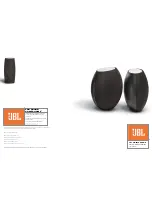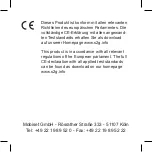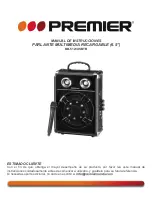
ver 1.0
4
44
4
~ÄëçäìíÉ=ÑáÇÉäáíó
2 Setting up
2.1 Positioning
A good starting position is for the G6.1sr to be placed horizontally
about 48 inches from the floor and approximately 10 degrees behind the
listener, and at the same distance from the listener as the main L/C/R
speakers.
Use a good quality stand that is solidly built and as rigid as possible, or
hang the speakers on extremely strong brackets on the wall. The
Genesis ServoSub™ 2/12t is a unique subwoofer that complements the
G6.1sr to turn it into a full-range absolute fidelity™ system.
On the home theatre processor, set the speaker to “LARGE” as the
G6.1sr will play to below 60Hz even without a subwoofer.
2.2 Loudspeaker Controls
The two knobs at the top of the plate on
the back of the speaker tailor the high-
frequency response of the G6.1sr and
determines the mode of operation.
2.2.1 Tweeter
Control
The tweeter control is subtle with only a
±
one dB range, but it can make a great
difference in gaining that last bit of additional performance in tuning your
speakers for the system in which you are using them. They can turn
your system from very good to exceptional, so take the time to work
through this process.
The left knob marked T
WEETER
is a volume control for the front tweeter.
Turning this control clockwise will increase the level of the tweeters. Use
this control if you need a bit more treble, or to increase the apparent
space of the soundstage. Too high a tweeter level, and you can feel that
voices are too sibilant. With music, crashing cymbals are leaping out at
you, and nylon stringed guitars sound steely. Start with this control at the
12 o'clock position. There is about a ±1dB range for this control.
2.2.2 Mode
The G6.1sr is a monopole/dipole surround speaker.
When used primarily to reproduce movie sound effects, the speaker can
be used in dipole mode. When set as such, the speaker sounds
ephemeral and diffused. The G6.1sr incorporates a unique phase
shifting crossover when used in dipole mode. In most surround



























